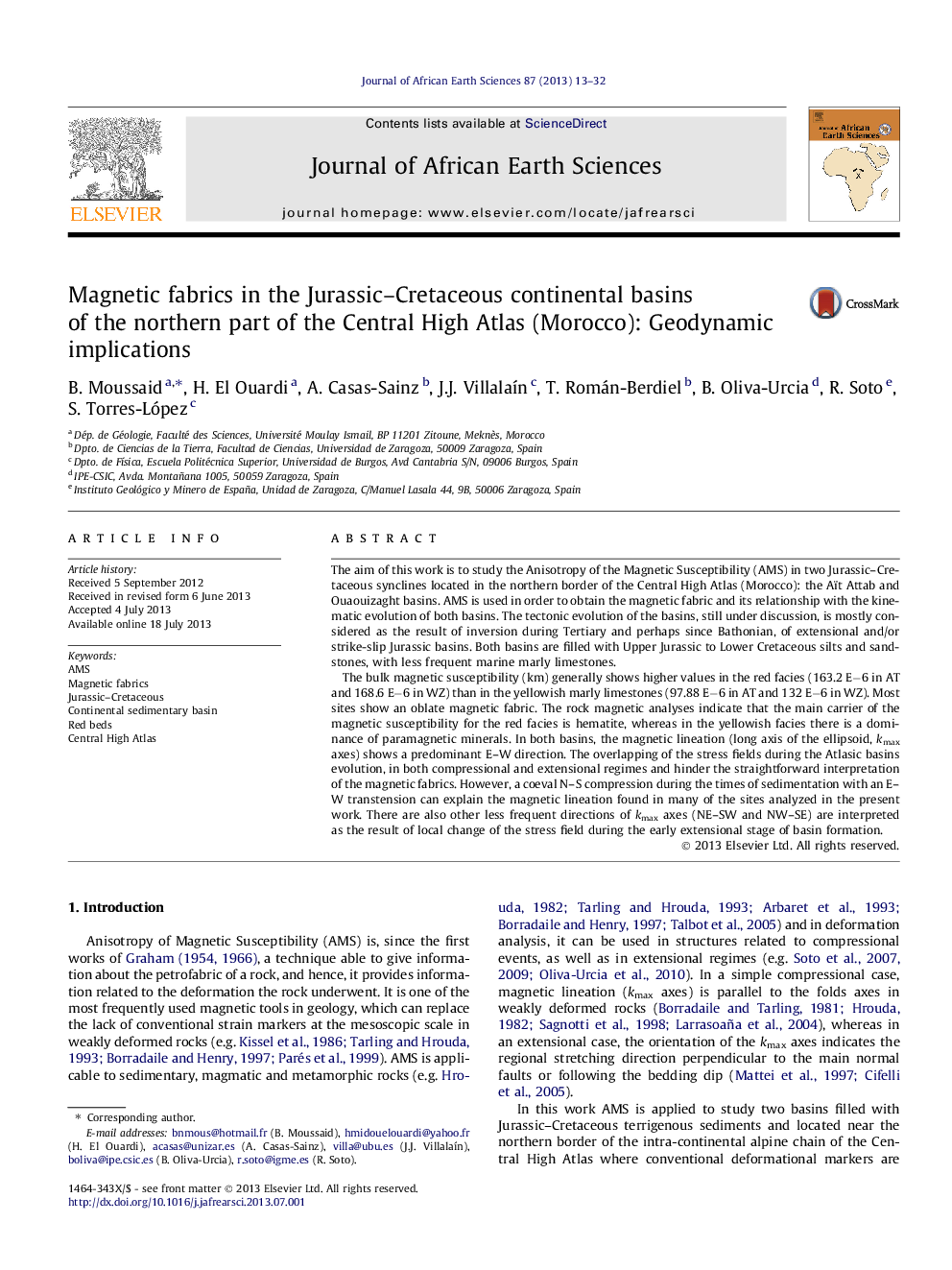| Article ID | Journal | Published Year | Pages | File Type |
|---|---|---|---|---|
| 4728895 | Journal of African Earth Sciences | 2013 | 20 Pages |
Abstract
The bulk magnetic susceptibility (km) generally shows higher values in the red facies (163.2 Eâ6 in AT and 168.6 Eâ6 in WZ) than in the yellowish marly limestones (97.88 Eâ6 in AT and 132 Eâ6 in WZ). Most sites show an oblate magnetic fabric. The rock magnetic analyses indicate that the main carrier of the magnetic susceptibility for the red facies is hematite, whereas in the yellowish facies there is a dominance of paramagnetic minerals. In both basins, the magnetic lineation (long axis of the ellipsoid, kmax axes) shows a predominant E-W direction. The overlapping of the stress fields during the Atlasic basins evolution, in both compressional and extensional regimes and hinder the straightforward interpretation of the magnetic fabrics. However, a coeval N-S compression during the times of sedimentation with an E-W transtension can explain the magnetic lineation found in many of the sites analyzed in the present work. There are also other less frequent directions of kmax axes (NE-SW and NW-SE) are interpreted as the result of local change of the stress field during the early extensional stage of basin formation.
Related Topics
Physical Sciences and Engineering
Earth and Planetary Sciences
Geology
Authors
B. Moussaid, H. El Ouardi, A. Casas-Sainz, J.J. VillalaÃn, T. Román-Berdiel, B. Oliva-Urcia, R. Soto, S. Torres-López,
